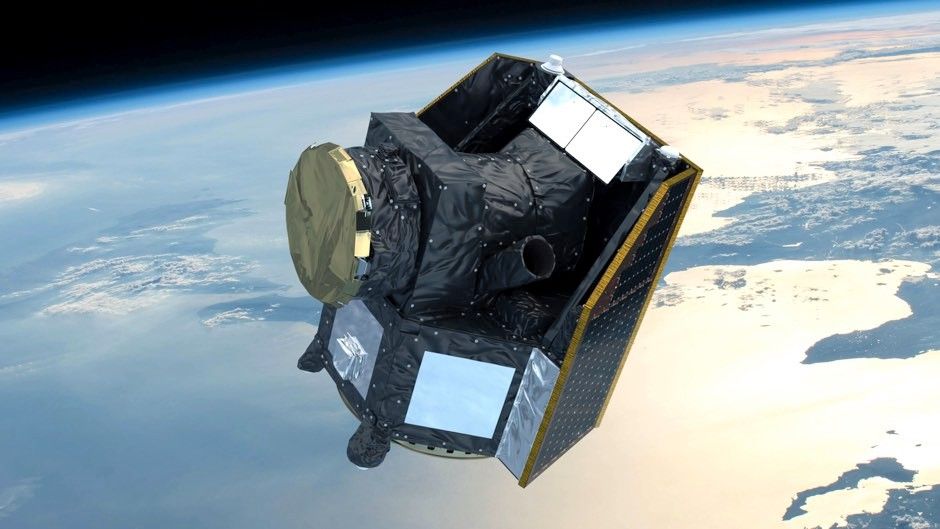
How Europe’s Exoplanet Hunter Will Unravel the Mystery of Extraterrestrial Life
Article by Samhati Bhattacharjya December 19, 2019 (ibtimes.sg)
• On December 18, 2019, the 11 member states of the European Space Agency launched the European Cheops space telescope – an acronym for ‘Characterizing Exoplanet Satellite’ – on a Russian-built Soyuz rocket. Didier Queloz, the 2019 Nobel Physics Prize winner, told AFP in French Guiana, “Cheops is (440 miles) away, exactly where we wanted it to be. It’s absolutely perfect. This is really an exceptional moment in European space history and in the history of the exoplanets.”
• Scientists say that there are 100 billion stars in our galaxy, and at least 100 billion galaxies in the universe. CHEOPS will help them to have a better understanding of what those planets are made of, says mission chief David Ehrenreich. This will be an important step to unraveling the mystery of extraterrestrial life. “[T]he first results can be expected within months,” said Queloz.
• The CHEOPS telescope will measure the density, composition and size of the 4,000 identified exoplanets. The telescope will measure the reflected light from the planets to discover new insights about the planet’s surface and atmosphere. The European Space Agency’s director of science, Guenther Hasinger, says the aim of the satellite is to compose “a family photo of exoplanets”.
• “In order to understand the origin of life,” says Queloz, “we need to understand the geophysics of these planets. It’s as if we’re taking the first step on a big staircase.”

The European Cheops planet-hunting space telescope was launched on Wednesday (December 18, 2019) to study the exoplanets outside our solar system. Cheops, an acronym for Characterizing Exoplanet Satellite, a joint endeavor of 11 member states of the European Space Agency (ESA), will observe the bright stars that are already known to be orbited by planets.

The telescope will measure the density, composition and size of the exoplanets. Didier Queloz, 2019 Nobel Physics Prize winner, told AFP in French Guiana, “Cheops is 710 kilometers (440 miles) away, exactly where we wanted it to be, it’s absolutely perfect. This is really an exceptional moment in European space history and in the history of the exoplanets.”
The first exoplanet, dubbed 51 Pegasi b, was identified by Queloz and his colleague Michel Mayor about 24 years ago. Since then roughly a total of 4,000 such exoplanets have been discovered.

Existence of extraterrestrial life
The launch of the satellite took place a day after its lift-off was delayed due to a technical rocket glitch during the final countdown. However, on Wednesday it successfully took off at around 0854 GMT French Guiana. This year, it was the third launch for the Russian-built Soyuz rocket.
According to the scientists, there are at least as many galaxies as there are stars —approximately 100 billion and CHEOPS will help them to have a better understanding of what those planets are made of. “We want to go beyond statistics and study them in detail,” mission chief David Ehrenreich had told AFP ahead of Wednesday’s launch.
FAIR USE NOTICE: This page contains copyrighted material the use of which has not been specifically authorized by the copyright owner. ExoNews.org distributes this material for the purpose of news reporting, educational research, comment and criticism, constituting Fair Use under 17 U.S.C § 107. Please contact the Editor at ExoNews with any copyright issue.
Cheops space telescope, David Ehrenreich, Didier Queloz, European Space Agency, Guenther Hasinger, podcast